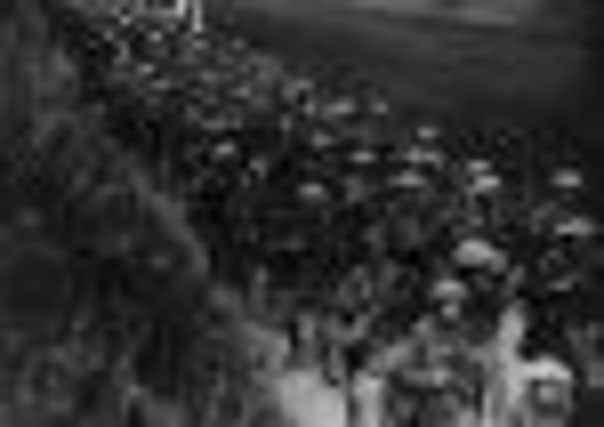The Americans who chose to fight for Scotland


In a lecture this Tuesday at New York Public Library to coincide with the city’s Tartan Week celebrations, Yvonne McEwen, of the University of Edinburgh’s school of history, classics and archaeology, will reveal the results of an ongoing study into the large numbers of American-born men, as well as Scottish emigres, who chose to travel to Scotland following the outbreak of the First World War to enlist.
“It’s an area of the First World War about which we know very little,” said McEwen. “But when we started to look into it we found men who had emigrated to the US who had returned, as well as Scots living in America who crossed the border into Canada so they could sign up, and some who were born on American soil but still chose to fight alongside the Scots rather than stay in America, where they’d be safe.”
Advertisement
Hide AdAdvertisement
Hide AdAlthough it is not known exactly how many men left America at the outbreak of war to enlist, it is believed to number into the hundreds. And when the Americans joined the war, an astonishing 251,699 Scots registered in the 1917/1918 US draft.
“We have also identified 5,000 Scots who served in the Australian forces, 3,000 in the Canadian forces and 600 in the New Zealand armed forces, all Scots-born men who signed up to enlist when war broke out,” said McEwen.
She said the reasons so many men chose to come home to fight were varied.
She said: “They were not compelled to come back home but you can only assume that the motherland at that point became more important than anything to them. There may also have been economic reasons – they were economic migrants who realised that America was not as good as they believed it to be, and coming home was another form of economic respite to them.”
Amongst the stories McEwen will discuss is that of the three Fraser-Campbell brothers of New York, who were born in the US to a wealthy Scots-American family. All three were Harvard graduates with promising careers who chose to return to Scotland to join the Argyll & Sutherland Highlanders.
Second Lieutenant William Baillie Fraser-Campbell, the youngest of the three, applied for a commission in 1915 and was attached to the 7th Argyll & Sutherland Highlanders. He was killed in action in France in 1918. A fellow officer wrote of him that he was “loved and adored by his men… who in his company would have gone through fire and water with him. He was the pride of the 7th A & SH.”
His brother, Captain Arnold Fraser-Campbell, of the 8th Argyll & Sutherland Highlanders, was wounded three times and lost an arm in action. He was awarded the Military Cross and in 1917 was awarded a bar to his Cross. The eldest brother, Evan, also served with the Argylls in France and was demobilised in 1919. A sculpture commemorating the three brothers, called The Singing Boys, now stands in New York’s Metropolitan Museum.
“None of those three brothers was obliged to sign up,” said McEwen. “They were professionals, Harvard boys, and they were not obliged to come back to Scotland to fight. You can only assume that it’s because their father came from Scotland and the boys decided it was their duty. But to lose one son and have another lose an arm, it was a huge contribution from a family that just did not need to do that.”
Advertisement
Hide AdAdvertisement
Hide AdThe research emerged from the Edinburgh’s War project, which was launched in 2009 by the university’s Centre for the Study of The Two World Wars alongside Edinburgh City Libraries to encourage the people and institutions of the city to contribute to the history of the period. It has now expanded to take in stories from all over Scotland and further afield, and McEwen hopes to gather more research on Scots emigres’ roles in the First World War.
“The project has become very big now,” said McEwen. “It is probably going to be the largest public engagement exercise any academic institution has ever engaged in. We have a lot of information which is being brought in by a small group of volunteers. My ambition at the end is to have the people of Scotland write Scotland’s history, so that the educational benefits of the project both for the public and for academics become immeasurable.”
The research also looks at the life of Second Lieutenant William Muir Clark, who was born in Cambuslang in 1898. He emigrated to the US on the SS Lusitania in 1910 and was brought up in Pennsylvania and California. When war in Europe first broke out, Clark – then aged 16 – ran away from school and worked his way to New York, before working his passage back across the Atlantic from New York to Liverpool, where he arrived in 1915 and immediately enlisted in the Black Watch. He was wounded four times and received the Distinguished Conduct Medal and the Military Medal. He was also decorated by King George with the Croix de Guerre and received the French Medaille Militaire. He was killed in action in France in 1918.
“He was an amazing young man,” said McEwen. “He just didn’t need to do what he did, yet he felt compelled to pay his own passage to come home and fight for the country he was born in.”